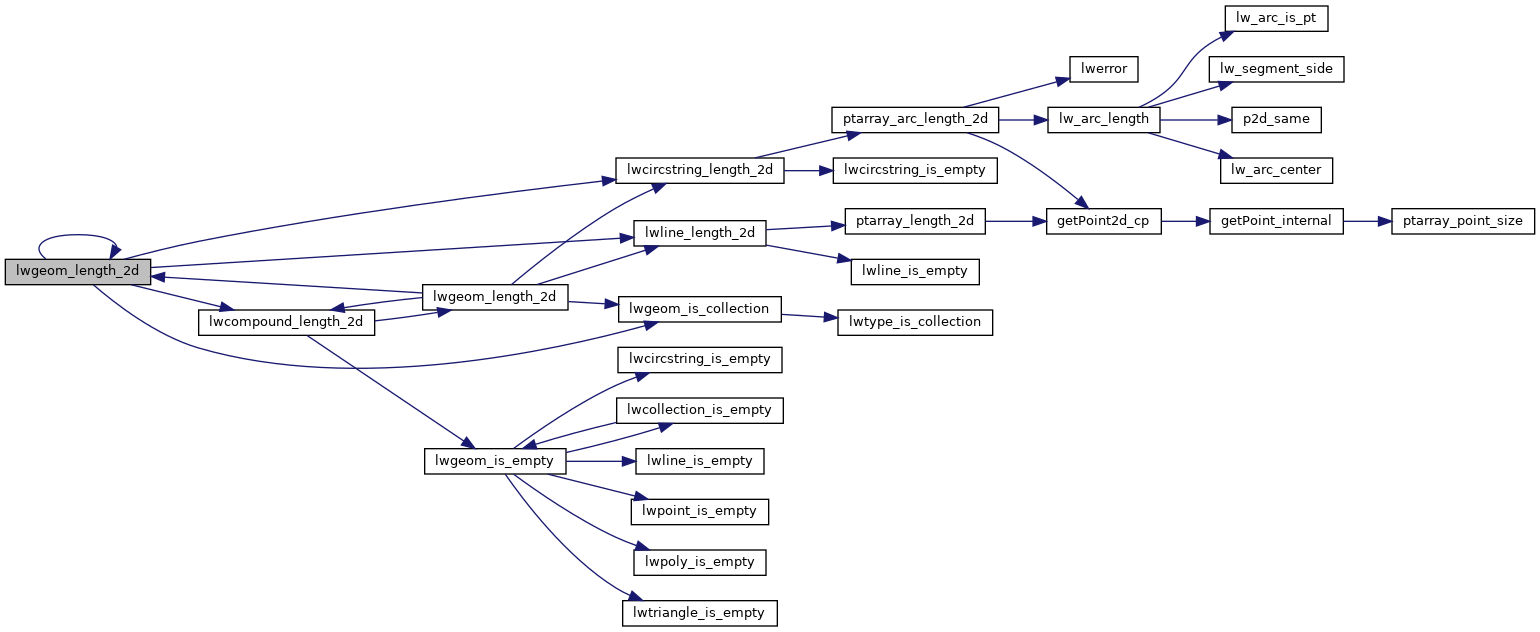◆ lwgeom_length_2d()
| double lwgeom_length_2d | ( | const LWGEOM * | geom | ) |
Definition at line 2060 of file lwgeom.c.
double lwcircstring_length_2d(const LWCIRCSTRING *circ)
Definition: lwcircstring.c:274
int lwgeom_is_collection(const LWGEOM *geom)
Determine whether a LWGEOM contains sub-geometries or not This basically just checks that the struct ...
Definition: lwgeom.c:1097
Definition: liblwgeom.h:505
Definition: liblwgeom.h:573
Definition: liblwgeom.h:587
Definition: liblwgeom.h:481
References CIRCSTRINGTYPE, COMPOUNDTYPE, CURVEPOLYTYPE, LWCOLLECTION::geoms, LINETYPE, lwcircstring_length_2d(), lwcompound_length_2d(), lwgeom_is_collection(), lwgeom_length_2d(), lwline_length_2d(), LWCOLLECTION::ngeoms, LWGEOM::type, and ovdump::type.
Referenced by gserialized_distance_nd(), lwcompound_length_2d(), lwcurvepoly_perimeter_2d(), LWGEOM_length2d_linestring(), and lwgeom_length_2d().
Here is the call graph for this function:

Here is the caller graph for this function:
